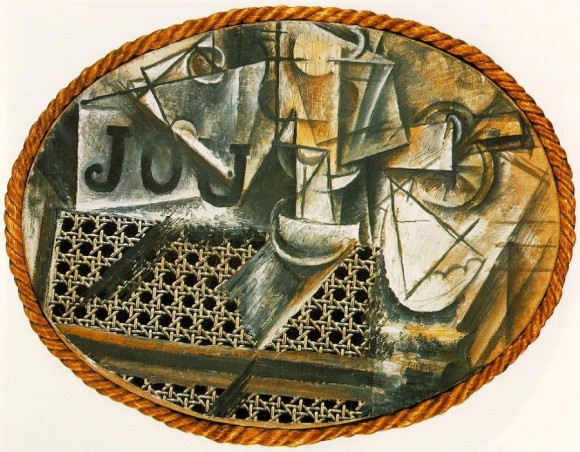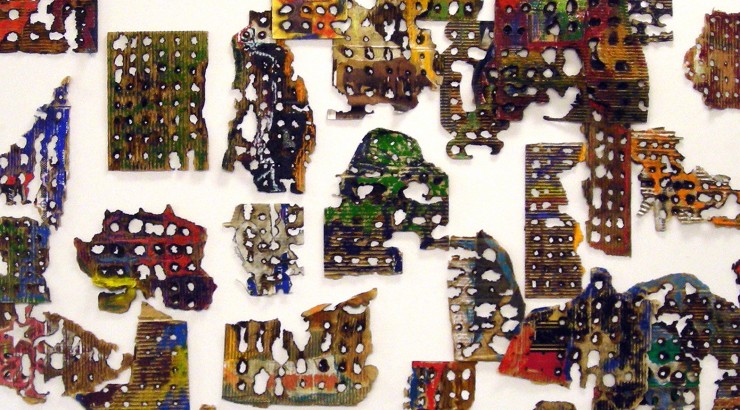Sticking Together: How Collage Revolutionized Art
April 18, 2016
Many of us remember collage as an activity from elementary school classrooms. We often associate it with the cutting up of old magazines for a social studies or science project. Glue stick in hand, collage became a common way for us to deliver a theme when we were children. However, not everyone is aware of the significance that collage has had as an art form.

Pablo Picasso, “Still Life with Chair Caning,” 1912, Oil on oil-cloth over canvas edged with rope, 29 x 37 cm, Musée Picasso, image courtesy of
PabloPicasso.org
Collage as an art form truly emerged at the start of the twentieth century, and came to be due to the experiments of Pablo Picasso and Georges Braques, the originators of cubism. Picasso and Braques were already exploring the breaking down of images with analytic cubism. Their early works in this style reduced familiar elements in our world down to curved lines and simple shapes. Synthetic cubism, now known as collage, applied similar principles of fragmentation, but took the style a step further by layering various materials on one surface.

Hannah Höch, “Cut with the Dada Kitchen Knife through the Last Weimar Beer-Belly Cultural Epoch in Germany,” 1919, collage of pasted papers, 90×144 cm, Nationalgalerie, Staatliche Museen zu Berlin (courtesy of
Wikipedia.org)
The term collage is derived from the French word “coller” which means “to glue”. This act of gluing went beyond the confines of paper on paper in the early twentieth century, as artists combined media of all kinds. Picasso’s Still Life With Chair Caning (1912) is a piece that revolutionized the art form. In this work, he uses part of a chair as his surface, and combines imagery in unexpected ways. For the first time, viewers of art had the opportunity to interpret commonplace items in a new way. The value of the materials changed as they were used to deliver new concepts through layering and juxtaposition.

Robert Rauschenberg, “Cardbird 1”, Collage print on corrugated cardboard, 1971, Gift of Mr. Donald H. Steinmetz, Escalette Collection
Since its early days, collage has inspired several art movements of the twentieth century and beyond. Dada artists drew inspiration from the technique for their readymade pieces in the post World War I era. A few decades later, artists like Robert Rauschenberg would be using collage as their main form. Rauschenberg often took collage a step further by melding together both flat elements but also three dimensional elements that popped off the surface. Innovations within the use of collage have become a staple of
Pop art. Collage has served as an excellent way for pop artists to break down consumer culture, as it can take the commercial goods that society holds so highly and render them effectively useless, yet loaded with meaning.
The direct use of objects (rather than illustrations of the objects) allows for a more aggressive and accessible piece of work. One of the most amazing things about collage is the fact that it broke down the barrier between high and low culture. It brings in elements that the average viewer can understand, and often uses these elements to make a powerful commentary. Many artists today continue to use collage in their work, such as Mark Bradford, who uses papers found around the streets of L.A. to tell the story of where those found objects come from.

Jay McCafferty, “Chobe”, Burned cardboard collage on canvas, Gift of Ron Linden, Escalette Colleciton
Collage has become such a significant element in both the art world and our childhoods as it allows for a world of creativity and innovations. The art form that changed the face of the art world continues to serve an important role in society.


